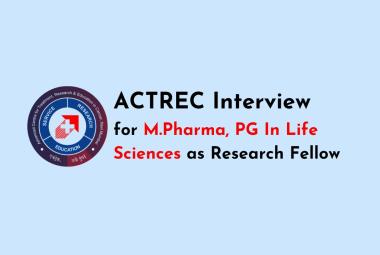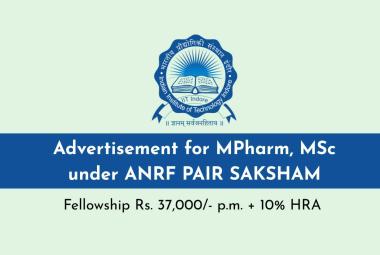ABOUT AUTHORS:
Vishwa Deepak Kumar*, Abhishek Sharma, Rajneesh Mishra, Kanchan Sharma
B.Pharmacy, 2nd year
Department of Pharmacy, IEC group of institutions,
Greater Noida (U.P) INDIA, Pin- 201301
*vdkumar.iec@gmail.com
ABSTRACT
For the past few decades, there has been a considerable research interest in the area of drug delivery using particulate delivery systems as carriers for small and large molecules. Particulate systems like nanoparticles have been used as a physical approach to alter and improve the pharmacokinetic and pharmacodynamic properties of various types of drug molecules. They have been used in vivo to protect the drug entity in the systemic circulation; various polymers have been used in the formulation of nanoparticles for drug delivery research to increase therapeutic benefit, while minimizing side effects. Here, we review various aspects of nanoparticle formulation, characterization, effect of their characteristics and their applications in delivery of drug molecules and therapeutic genes. Nanoparticles are the preparations having size in nanometers.
REFERENCE ID: PHARMATUTOR-ART-1823
INTRODUCTION
Nanoparticles are defined as particulate dispersions or solid particles with a size in the range of 10-1000nm. The drug is dissolved, entrapped, encapsulated or attached to a nanoparticle matrix. Depending upon the method of preparation, nanoparticles, nanospheres or nanocapsules can be obtained. Nanocapsules are systems in which the drug is confined to a cavity surrounded by a unique polymer Membrane, while nanospheres are matrix systems in which the drug is physically and uniformly dispersed. Nanoparticles are sub-nanosized colloidal structures ranging from 10 nm to 1000 nm and are compared of synthetic or semi synthetic polymers.
The major goals in designing nanoparticles as a delivery system are to control particle size, surface properties and release of pharmacologically active agents in order to achieve the site-specific action of the drug at the therapeutically optimal rate and dose regimen. Though liposomes have been used as potential carriers with unique advantages including protecting drugs from degradation, targeting to Site of action and reduction toxicity or side effects, their applications are limited due to inherent problems such as low encapsulation efficiency, rapid leakage of water-soluble drug in the presence of blood components and poor storage stability. Nanoparticles have been actively explored at delivery system for small drug molecules as well as macromolecules such as nucleic acids, peptides, proteins and hormones. Because macromolecules, such as peptides and proteins have stability problems, their encapsulation provides protection against gastrointestinal enzymes and pH effects, when administered by oral route. Further it was realized that the nanoparticles loaded bioactive could not deliver drugs at specific organs within the body but delivery in addition could also be controlled. Nanoclusters have at least one dimension between 1 and 10 nanometers and a narrow size distribution. Nanopowders are agglomerates of ultrafine particles, nanoparticles, or nanoclusters. Nanometer-sized single crystals, trafine particles, are often referred to as nanocrystals.

FIG 1Different size of Nanoparticles
The advantages of using nanoparticles as a drug delivery system include the following:
1. Particle size and surface characteristics of nanoparticles can be easily manipulated to achieve both passive and active drug targeting after parenteral administration.
2. They control and sustain release of the drug during the transportation and at the site of Localization, altering organ distribution of the drug and subsequent clearance of the drug so as to achieve increase in drug therapeutic efficacy and reduction in side effects.
3. Controlled release and particle degradation characteristics can be readily modulated by the Choice of matrix constituents. Drug loading is relatively high and drugs can be incorporated into the systems without any chemical reaction; this is an important factor for preserving the drug Activity.
4. Site-specific targeting can be achieved by attaching targeting ligands to surface of particles or use of magnetic guidance.
5. The system can be used for various routes of administration including oral, nasal, parenteral, Intra-ocular etc.
These practical problems have to be overcome before nanoparticles can be used clinically or made commercially available. The present review details the latest development of nanoparticulate drug delivery systems, surface modification issues, drug loading strategies, release control and potential applications of nanoparticles. The nanoparticles are good candidates to be shown as adjuvant for vaccines and advantageous features of nanoparticles include increased interaction of drug molecules with epithelial cells can be achieved leading to maximal absorption of the drug molecule.
HISTORY OF NANOPARTICLES RESEARCH
The history of nanoparticle research is long and the use of these particles dates back to the 9th century in Mesopotamia when artisans used these to generate a glittering effect on the surface of pots. This lustre or glitter over pottery from the Middle Ages and Renaissance is due to a metallic film that was applied to the transparent surface of a glazing. The lustre can still be visible if the film has resisted atmospheric oxidation and other weathering.The lustre is within the film itself which contained silver and copper nanoparticles dispersed homogeneously in the glassy matrix of the ceramic glaze. Artisans created the nanoparticles by adding copper and silver salts and oxides together with vinegar, ochre and clay, on the surface of previously-glazed pottery. Then the pots were placed into a kiln and heated to about 600 °C in a reducing atmosphere. With the heat the glaze would soften, causing the copper and silver ions to migrate into the outer layers of the glaze.Michael Faraday provided the first description, in scientific terms, of the optical properties of nanometer-scale metals in his 1857 paper.
STRUCTURE OF NANOPARTICLES
Drug nanoparticles consist of the drug and biocompatible polymer, either biodegradable or non biodegradable Nanoparticles can be further classified into nanocapsules and nanospheres based on their structure. A nanocapsule consists of central oily core containing the lipophillic drug surrounded by a shell composed of polymer. Nanospheres are solid core spherical particulates having a matrix consisting of a homogeneous distribution of the drug and polymer. The drug is either solubilized in the polymer matrix to form an amorphous particle or embedded in the polymer matrix as crystallites.
- A matrix –type nanoparticles, where the drug molecules are dispersed in the polymer matrix.
- A core shell nanoparticles, where e core containing the drug is covered with a polymer shell.
- A matrix-type nanoparticle, where drug crystals are embedded in a polymer matrix.
PREPRATION OF NANOPARTICLES
Nanoparticles can be prepared from a variety of materials such as proteins, polysaccharides and Synthetic polymers. The selection of matrix materials is dependent on many factors including (a) size of nanoparticles required; (b) inherent properties of the drug, e.g., aqueous solubility and stability; (c) surface characteristics such as charge and permeability; (d) degree of biodegradability, biocompatibility and toxicity; (e) Drug release profile desired; and (f) Antigenicity of the final product.
Dispersion of preformed polymers: Dispersion of preformed polymers is a common technique used to prepare biodegradable nanoparticles from poly (lactic acid) (PLA); poly (D, L-glycolide), PLG; poly (D, L-lactide-co-glycolide) (PLGA) and poly (cyanoacrylate) (PCA), 10-12. This technique can be used in various ways as described below.
Solvent evaporation method: In this method, the polymer is dissolved in an organic solvent such as dichloromethane, chloroform or ethyl acetate which is also used as the solvent for dissolving the hydrophobic drug. The mixture of polymer and drug solution is then emulsified in an aqueous solution containing a surfactant or emulsifying agent to form an oil in water (o/w) emulsion.
Emulsion/ Evaporation: This method can be used for preparation of particles with sizes varying from a few nanometers to micrometers by controlling the stirring rates and conditions, showing high efficiency in incorporation of lipophillic drugs.
Double Emulsion: This method referred to as variant of the Emulsion/Evaporation method as this method suffers from poor entrapment efficiency of hydrophilic drugs. Therefore, this method is used for incorporating hydrophilic drugs.
Salting Out: This technique is suitable for drugs and polymers that are soluble in polar solvents, such as acetone or ethanol. Solution of polymer and drug in a slightly water miscible solvent is added to aqueous solution containing a salting out agent and stabilizer under stirring.
Emulsification– Diffusion: It is a modified version of solvent evaporation method. In this method, the water miscible solvent along with a small amount of water immiscible organic solvent is used as an oil phase. Due to the spontaneous diffusion of solvents an interfacial turbulence is created between the two phases leading to formation of small particles. As the conc. of water miscible solvent increases, a decrease in size of particle can be achieved.
Emulsion-Difussion-Evaporation: This method incorporates both evaporation and diffusion process in nanoparticles formation. Solution of polymer in solvent is added to aqueous phase under stirring .To this emulsion, water is added which results in nano precipitation.
Coacervation or Ionic Gelation Method: Much research is now focused on the nanoparticles using biodegradable hydrophilic polymers such as chitosan, gelatin and sodium alginate. Calvo and co-workers proposed a method for preparation hydrophilic chitosan nanoparticles by ionic gelation.
Production of nanoparticles using super critical fluid technology
Conventional methods such as solvent extraction-evaporation, solvent diffusion and organic phase separation methods require the use of organic solvents which are hazardous to the environment as well as to physiological systems. Therefore, the supercritical fluid technology has been investigated as an alternative to prepare biodegradable micro- and nanoparticles because supercritical fluids are environmentally safe.
Effect of Characteristics of Nanoparticles on Drug Delivery
Particle size
Particle size and size distribution are the most important characteristics of nanoparticle systems. They determine the in vivo distribution, biological fate, toxicity and the targeting ability of nanoparticle systems. In addition, they can also influence the drug loading, drug release and stability of nanoparticles. Many studies have demonstrated that nanoparticles of sub-micron size have a number of advantages over microparticles as a drug delivery system.
Static Light Scattering: Dynamic light scattering (DLS) is the name that covers different techniques for measurement of particle size from the dynamic changes of the scattered light intensity. Photon correlation spectroscopy (PCS) is at present the most widely used name. It relates to the correlation technique that is most frequently applied in instruments. Quasi-elastic light scattering (QELS) was used as a name often in the past. This term relates to the type of interaction between particles and light.

Scanning Electron Microscopy (SEM) : The scanning electron microscope (SEM) is a type of electron microscope that images the sample surface by scanning it with a high-energy beam of electrons in a raster scan pattern. The electrons interact with the atoms that make up the sample producing signals that contain information about the sample's surface topography, composition and other properties such as electrical conductivity. The types of signals produced by an SEM include secondary electrons, back-scattered electrons (BSE), characteristic X-rays, light (cathodoluminescence), specimen current and transmitted electrons. Secondary electron detectors are common in all SEMs, but it is rare that a single machine would have detectors for all possible signals.
Surface properties of nanoparticles
When nanoparticles are administered intravenously, they are easily recognized by the body immune systems, and are then cleared by phagocytes from the circulation 34. Apart from the size of nanoparticles, their surface hydrophobicity determines the amount of adsorbed blood components, mainly proteins (opsonins). This in turn influences the in vivo fate of nanoparticles.
Zeta Potential: Zeta potential is used as a surrogate for surface change, and is often measured by observing the oscillations in signal that result from light scattered by particles located in an electric field, though there are other approaches. There are a number of instrumental configurations by which this is achieved, mostly using a Doppler shift, and the user should familiarize them with the particular approach implemented in their equipment.
Electrophoresis: The body’s response to the introduction of nanoparticles into circulation is such that within a short period of time their surface is festooned with lipoproteins and related species. This process will determine the clearance and biodistribution of the colloid, so evaluating the exact nature of the surface coverage is required to achieve a useful understanding.
Nanoparticles for gene delivery
Polynucleotide vaccines work by delivering genes encoding relevant antigens to host cells where they are expressed, producing the antigenic protein within the vicinity of professional antigen presenting cells to initiate immune response. Such vaccines produce both humoral and cell-mediated immunity because intracellular production of protein, as opposed to extracellular deposition, stimulates both arms of the immune system.
THERAPEUTIC APPLICATIONS OF NANOPARTICLES
Nanoparticles have been widely employed for different therapeutic applications, some of which are listed below:
- For intracellular targeting of anti-effective drugs to combat the difficult to treat’ intracellular infections of the human body.
- For targeting of cytostatic drugs to reduce toxicity and increase therapeutic activity.
- For specific targeting of anti-inflammatory drugs to areas of inflammation, by which the side-effects of these drugs can be minimized.
- For ocular delivery systems, to deliver pilocarpine and other miotic drugs.
- As carriers for radionucleotides for diagnostic purposes in nuclear medicines.
- To improve the solubility and bioavailability of poorly soluble drugs and protects from gastrointestinal enzymes and hence, helps in peroral absorption.
- For skin and hair care in the form of solid nanoparticles, wherein the oily core contains a wide variety of different cosmetic oils and lipophilic agents.
- To deliver drugs across the blood brain barrier (BBB).
- To formulate sustained release preparations.
- For the controlled delivery of disinfectants or algicide into large bodies of water such as insect pest feed .
- For targeted delivery of proteins and peptides.
- As adjuvants to render antigens potent enough to be useful for vaccines.
- Have prolonged systemic drug effect due to prolonged systemic circulation and hence, uptake by reticuloendothelial system can be avoided.
ADVANTAGES OF NANOPARTICLES
• Nanoparticles have dimensions below the critical wavelength of light renders them transparent, a property which makes them very useful for applications in packaging’s, cosmetics and coatings.
• Particle size and surface characteristics of nanoparticles can be easily manipulated to achieve both active and passive targeting.
• Release of the drug can be controlled or sustained so as to achieve increase in therapeutic efficacy of drug and reduction in side-effects.
• They are capable of being stored for a period of upto 1 year and hence have longer shelf stability.
• They have the ability to incorporate both hydrophilic and hydrophobic drug molecules.
• They have higher carrier capacity and drugs can be incorporated without any chemical reaction and hence preserving the drug activity.
• The system can be administered via different routes including oral, nasal, parenteral etc.
• These have the potential to increase the bioavailability of drugs.
• They have longer clearance time.
• Site-specific targeting can be achieved by attaching targeting ligands to surface of particles or by using magnetic guidance.
DISADVANTAGES OF NANOPARTICLES
• It involves higher manufacturing costs which may in turn lead to increase in the cost of formulation.
• These have low encapsulation efficiency.
• Water-soluble drugs can be rapidly leaked out in the presence of blood components.
• Their small size and large surface area can lead to particle-particle aggregation, making physical handling of nanoparticles difficult in dry and liquid forms.
• They may trigger immune response and allergic reaction.
• It may involves use of harsh toxic solvents in the preparation process.
IDEAL PROPERTIES OF NANO PARTICLES
Nanoparticles can be considered as a realizable method for drug delivery, following ideal properties of the system are required:
• Stable in blood
• Non toxic
• Non thrombogenic
• Non immunogenic
• Non inflammatory
• No activation of neutrophils
• Biodegradable
• Avoidance of the reticulo-endothelial system
• Applicable to various molecules, such as small molecules, proteins, peptides or nucleic acids (platform technology)
• Scalable and inexpensive manufacturing process
Because poly (butyl-cyano-acrylate) nanoparticles above properties and were reported to be useful tools to deliver the drugs in several experiments. In addition, they exhibit very low toxicity and are considered to be ideal.
CONCLUSION
Nanoparticles are the colloidal particles whose size ranges in the nanometric size which are mainly employed through parenteral route, hence, requiring careful development of test methods and acceptance criteria for the specifications. The foregoing shows that nanoparticulate systems have great potentials, being able to convert poorly soluble, poorly absorbed and labile biologically active substance into promising deliverable drugs.To optimize this drug delivery system, greater understanding of the different mechanisms of biological interactions, and particle engineering, is still required. Further advances are needed in order to turn the concept of nanoparticle technology into a realistic practical application as the next generation of drug delivery system. In particular, the in vitro release test method and acceptance criteria require rigorous scientific consideration and should be developed with an eye toward understanding the mechanisms of drug release. The final specifications need to ensure the safety, identity, strength, performance, and quality of the drug product at release and during storage through the end of its shelf-life. The objective of nanoparticulate system is to achieve a desired pharmacological response in a sustained manner at a selected site without undesirable interactions at the other sites. This is especially important in cancer chemotherapy, enzyme replacement therapy etc.
REFERENCES
1. Panyam J, Labhasetwar V. Biodegradable nanoparticles for drug and gene delivery to cells and tissue. Adv Drug Deliv Rev 2003; 55(3):329-347.
2. Vyas SP, Khar RK, Targeted and controlled drug delivery: Novel carrier systems CBS Publishers, New Delhi, 2002; Page no 26-39.
3. Bhardwaj V, Hariharan S, Bala I, Lamprecht A, Kumar N, Panchagnula R. Pharmaceutical aspects of polymeric nanoparticles for oral delivery. J. Biomed. And Nanotech 2005; 1:1-23.
4. Chen Y. in vitro characterization and in vivo evaluation of microsphere as carriers for the anticancer drug adriamycin. Ph.D thesis 1989, University of strathclyde Glasgow.
5. Mosqueira VC, Legrand P, Morgat JL, Vert M, Mysiakine E, Gref R, Devissaguet JP, Barratt G. Biodistribution of long-circulating PEG-grafted nanocapsules in mice: effects of PEG chain length and density. Pharm Res. 2001; 18(10):1411-1429.
6. Allen TM, Cullis PR. Drug delivery systems: entering the mainstream. Science 2004; 303(5665):1818-1822.
7. Calvo P, Remunan LC, Vila-Jato JL, Alonso MJ. Novel hydrophilic chitosan-polyethylene oxide nanoprticles as protein carriers. J. Appl. Polymer Sci. 1997; 63: 125-132.
8. Alex R, Bodmeier R. Encapsulation of water-soluble drugs by a modified solvent evaporation method. I. Effect of process and formulation variables on drug entrapment. J Microencapsul 1990; 7(3):347-355.
9. Pignatello R, Bucolo C, Ferrara P, Maltese A, Puleo A, Puglisi G. Eudragit RS100 nanosuspensions for the ophthalmic controlled delivery of ibuprofen. Eur J Pharm Sci. 2002; 16(1-2):53-61.
10. Mu L, Feng SS. Fabrication, characterization and in vitro release of paclitaxel (Taxol) loaded poly (lactic-co-glycolic acid) microspheres prepared by spray drying technique with lipid/cholesterol emulsifiers. J Control Release 2001; 76(3):239-254.
11. Boudad H, Legrand P, Lebas G, Cheron M, Duchêne D, Ponchel G. Combined hydroxypropyl-beta-cyclodextrin and poly(alkylcyanoacrylate) nanoparticles intended for oral administration of saquinavir. Int J Pharm 2001; 218(1-2):113-124.
12. Hrkach JS, Peracchia MT, Domb A, Lotan N, Langer R. Nanotechnology for biomaterials engineering: structural characterization of amphiphilic polymeric nanoparticles by 1H NMR spectroscopy. Biomaterials 1997; 18(1):27-30.
13. Ghersi-Egea JF, Leninger-MB, Suleman G, Siest G, Minn A. Localization of drug-metabolizing enzyme activities to blood-brain interfaces and circumventricular organs. J Neurochem 1994; 62(3):1089-1096.
14. Kim W, Thévenot J, Ibarboure E, Self-assembly of thermally responsive amphiphilic diblock copolypeptides into spherical micellar nanoparticles, Angew Chem Int Ed Engl. 2010; 49(25):4257-4260.
15. Bala I, Hariharan S, Kumar MN. PLGA nanoparticles in drug delivery: the state of the art. Crit Rev Ther Drug Carrier Syst 2004; 21(5):387-422.
16. Olivier JC. Drug transport to brain with targeted nanoparticles. Neuro Rx 2005; 2(1):108-119.
17. Particle size analysis- Photon correlation spectroscopy. ISO;1996: 13321-13331.
18. Kocbek P, Baumgartner S, Kristl J. Preparation and evaluation of nanosuspensions for enhancing the dissolution of poorly soluble drugs. Int J Pharm 2006; 312(1-2):179-186.
19. Quintanar-GD, Allémann E, Fessi H. Preparation techniques and mechanisms of formation of biodegradable nanoparticles from preformed polymers. Drug Dev Ind Pharm 1998; 24(12):1113-1128.
20. Ficheux.M, Bonakdar.L, Leal-Calderon.F, and Bibette.J, Some stability criteria for double emulsions. Langmuir 1998; 14:2702-2706.
21. Poovi G, Narayanan N. Preparation and characterization of repaglinide loaded chitosan polymeric nanoparticles. Research Journal of nanoscience and nanotechnology. 2010; 1(1): 12-24.
22. Levy MY, Benita S. Drug release from submicron o/w emulsion: A new in vitro kinetic evaluation method. Int. J. Pharm 1990; 66:29–37.
23. Govender T, Stolnik S, Garnett MC, Illum L, Davis SS. PLGA nanoparticles prepared by nanoprecipitation: drug loading and release studies of a water soluble drug. J Control Release. 1999; 57(2):171-185.
24. Calvo P, Remunan LC, Vila-Jato JL, Alonso MJ. Novel hydrophilic chitosan-polyethylene oxide nanoprticles as protein carriers. J. Appl. Polymer Sci. 1997; 63: 125-132.
25. Mu L, Feng SS. Fabrication, characterization and in vitro release of paclitaxel (Taxol) loaded poly (lactic-co-glycolic acid) microspheres prepared by spray drying technique with lipid/cholesterol emulsifiers. J Control Release 2001; 76(3):239-254.
26. John MB. Protecting workers and the environment: An environmental NGO’s perspective on nanotechnology. J. Nanopart. Res. 2007; 9:11–22.
27. Jung J, Perrut M. Particle design using supercritical fluids: Literature and patent survey. J. Supercritical Fluids 2001; 20: 179-219.
28. John MB. Protecting workers and the environment: An environmental NGO’s perspective on nanotechnology. J. Nanopart. Res. 2007; 9:11–22.
29. Azmin MN, Florence AT, Handjani-Vila RM, Stuart JF, Vanlerberghe G, Whittaker JS. The effect of non-ionic surfactant vesicle (niosome) entrapment on the absorption and distribution of methotrexate in mice. J Pharm Pharmacol 1985; 37(4):237-242.
30. Pardridge WM. Brain drug development and brain drug targeting. Pharm Res 2007; 24(9):1729-1732.
31. Jiang B, Hu L, Gao C, Shen J. Ibuprofen-loaded nanoparticles prepared by a co-precipitation method and their release properties. Int J Pharm 2005; 304(1-2):220-230.
32. Hrkach JS, Peracchia MT, Domb A, Lotan N, Langer R. Nanotechnology for biomaterials engineering: structural characterization of amphiphilic polymeric nanoparticles by 1H NMR spectroscopy. Biomaterials 1997; 18(1):27-30.
33. Schroeder U, Sommerfeld P, Ulrich S, Sabel BA. Nanoparticle technology for delivery of drugs across the blood-brain barrier. J Pharm Sci. 1998; 87(11):1305-1307.
34. Kohane DS. Microparticles and nanoparticles for drug delivery. Biotechnol Bioeng 2007; 96(2):203-209.
35. Beduneau A, Saulnier P, Benoit JP. Active targeting of brain tumors using nanocarriers. Biomaterials 2007; 28(33):4947-4967.
36. Alex R, Bodmeier R. Encapsulation of water-soluble drugs by a modified solvent evaporation method. I. Effect of process and formulation variables on drug entrapment. J Microencapsul 1990; 7(3):347-355.
37. Goppert TM, Muller RH. Alternative sample preparation prior to two-dimensional electrophoresis protein analysis on solid lipid nanoparticles. Electrophoresis 2004; 25(1):134-140
38. Couvreur P, Barratt G, Fattal E, Legrand P, Vauthier C. Nanocapsule technology: a review. Crit Rev Ther Drug Carrier Syst 2002; 19: 99-134.
39. Govender T, Stolnik S, Garnett MC, Illum L, Davis SS. PLGA nanoparticles prepared by nanoprecipitation: drug loading and release studies of a water soluble drug. J. Control. Rel. 1999; 57: 171-185.
40. Govender T, Riley T, Ehtezazi T, Garnett MC, Stolnik S, Illum L, Davis SS. Defining the drug incorporation properties of PLA-PEG nanoparticles. Int J Pharm 2000; 199: 95-110.
41. Panyam J, Williams D, Dash A, Leslie-Pelecky D, Labhasetwar V. Solid-state solubility influences encapsulation and release of hydrophobic drugs from PLGA/PLA nanoparticles. J Pharm Sci 2004; 93: 1804-14.
42. Peracchia M, Gref R, Minamitake Y, Domb A, Lotan N, Langer R. PEG-coated nanospheres from amphiphilic diblock and multiblock copolymers: investigation of their drug encapsulation and release characteristics. J Control Release 1997; 46: 223–231
43. Chen Y, McCulloch, RK, Gray BN. Synthesis of albumin-dextran sulfate microspheres possessing favourable loading and release characteristics for the anti-cancer drug doxorubicin. J Control Release 1994; 31: 49-54.
NOW YOU CAN ALSO PUBLISH YOUR ARTICLE ONLINE.
SUBMIT YOUR ARTICLE/PROJECT AT articles@pharmatutor.org
Subscribe to Pharmatutor Alerts by Email
FIND OUT MORE ARTICLES AT OUR DATABASE









